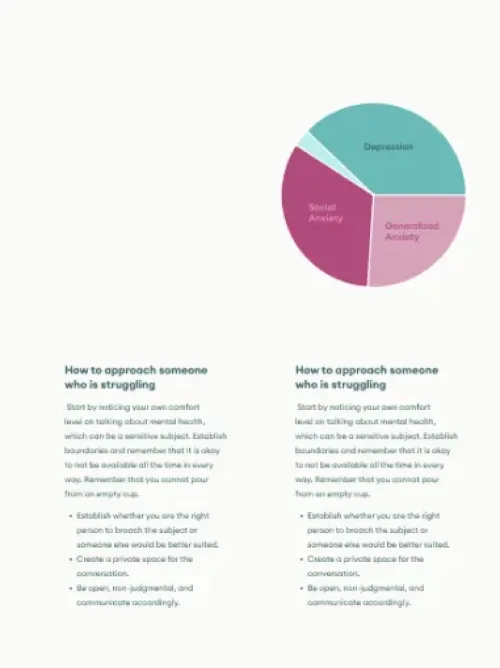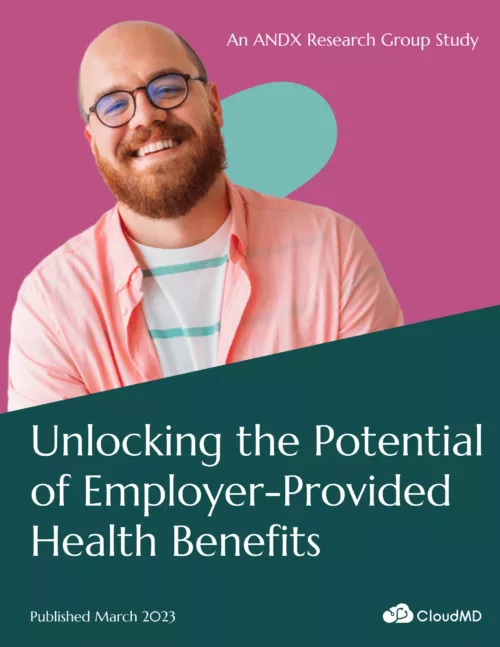Recession-Proofing Your Well-being Strategy in the Workplace

5 Minute Read
What is your organization’s strategy for 2023 when it comes to employee well-being? A team is only as strong as its weakest link – and if your employees are struggling to stay afloat emotionally or physically, the effects are felt company-wide. It’s absolutely crucial to have a fully developed well-being strategy in place to make sure that your employees are cared for, no matter what the economic climate.
Recent years have seen us through some of the most tumultuous economic times, and while the future is uncertain, one thing remains true: the need to protect employee well-being is critical. Let’s cover some strategies for looking after the mental health of your employees no matter what comes amid the recession.
The State of Mental Health in the Workplace
It’s been a rough few years since the COVID-19 pandemic first reared its ugly head and throughout 2022, demand for mental health support significantly increased, pushing traditional providers to their limits and crisis lines experiencing large surges in call volumes. Once we could return to our social lives around the mid-point of 2022 and feel a sense of connectedness again, things began to feel less bleak.
Still, an alarming rate of employees are experiencing a negative state of psychological health, with 97% of young employees between 19-34 feeling burned out. Anxiety and depression also run rampant, and it’s not just due to the pandemic.
When looking ahead to 2023, over 90 percent of Canadian CEOs believe we’re headed towards a bad recession. The majority of employees are aware of this, too, and fear for their jobs as a result. Stressors like job insecurity, long hours, and lack of workplace support can all contribute to an employees’ mental health struggles – especially when the economy is this rocky.
At a time like this, the last thing employees want to doubt is whether or not they’re going to receive the care they need. That’s where your healthcare strategy comes into play.
The Responsibility of Employers
Employers need to be taking responsibility for their employees’ well-being, now more than ever. It’s not enough to just provide a few basic benefits; you can be actively engaging in conversations about mental health and creating an environment that promotes its importance but what concrete solutions are you offering?
Providing multiple resources to your employees so they can find the support they need, whether it’s through group therapy sessions, EFAPs (Employee and Family Assistance Programs), or even on-site counsellors will offer positive outcomes. If possible, set up flexible hours or work-from-home options when needed; no one should have to choose between their job and their mental health.
Whole-Person Well-Being: A Crucial Distinction
It’s common for organizations to go through multiple different vendors when arranging benefits. There are a few reasons why this isn’t the best option, however:
- You increase your administrative workload by dealing with multiple vendors.
- The cost of multiple services adds up quickly – and you won’t always get the best deal.
- You can’t guarantee that all of the different services will be integrated into one cohesive well-being strategy.
- Your employees don’t have any control or input in their healthcare plan.
- Whole-person well-being is a more holistic approach to employee health, and it’s essential for protecting their mental health in uncertain times. This means looking at physical, emotional, financial, and social needs and providing resources for each area.
By integrating all of these services into one plan, you make sure that your employees are taken care of from every angle, no matter what economic climate they’re facing.
CloudMD’s health and wellness program, Kii, provides organizations with Employee Assistance, Mental Health Supports, Telemedicine, Absence Management and Occupational Health & Safety. It’s all accessible through one, connected program with a highly skilled nurse to help employees navigate the full spectrum. Connect with us to bring this innovative program to your organization.




